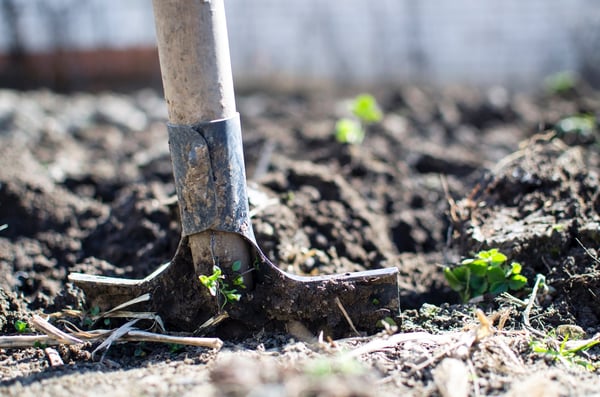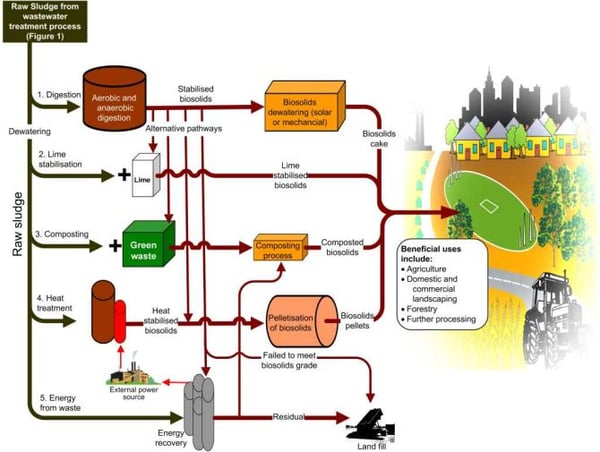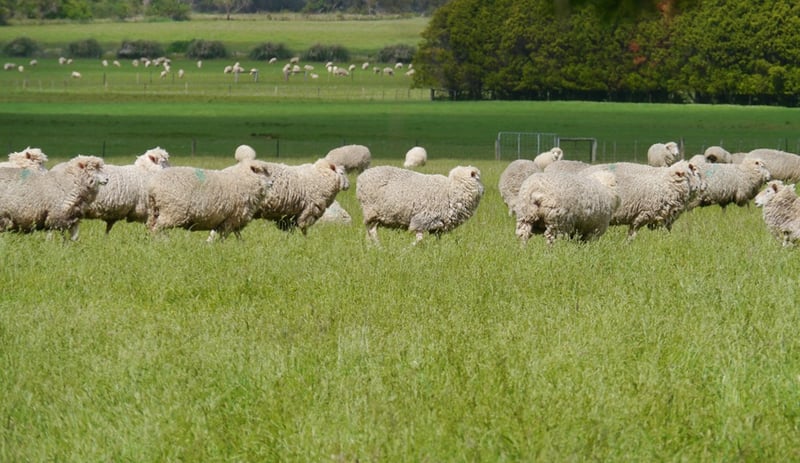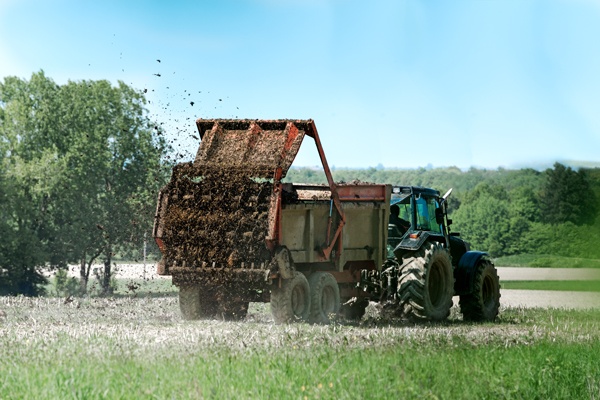With areas of New South Wales experiencing the worst drought in over 100 years, farmers are realising the true benefits of biosolid fertiliser, transforming farms by cultivating pastures which are proving to be highly resilient to drought. Even though it might make you want to double check where your food is being grown, biosolids is really showing that with Australia's fluctuating rainfall, it might be the best and only way forward.
Very eloquently worded, biosolids are nutrient rich organic material obtained from waste water treatment. A by-product of the sewage treatment processes, the sludge is treated to reduce disease causing pathogens and volatile organic matter, and once it fulfills a strict set of management guidelines, it can be considered a bio-solid.
Mainly used as a fertiliser to improve and maintain productive soils and stimulate growth in pastures for livestock and crops, biosolids can also used to fertilise gardens, parks and rehabilitate mining sites.
With record low rainfall, biosolids have had a great impact on drought-stricken farmers. Farmers are proving that the paddocks which have biosolids applied, the grass growth is responding quicker to only 10-15mm of rain while other paddocks not fertilised with biosolids are remaining dry and dead.
The root systems are longer, penetrating deeper and therefore holding on for longer. This extended life of their paddocks means that the farmers still have grass left for their stock and don't need to truck in the huge quantities of hay and feed that other farmers are being forced to do.
More and more farmers are starting to use biosolid fertilisers as its benefits are justified again and again, despite the obvious funny implications the origins of the fertiliser has.

How are biosolids created?
Most waste water comes from household kitchens, laundries and bathrooms. This waste water ultimately requires treatment at a sewage plant.
The sewage is put through various filtration processes, with the raw sludge being filtered off for processing into biosolids. It is then processed a few different ways, depending on the final product, turning the sludge into biosolid cakes, lime stabilised biosolids, composted biosolids and/or pellets. If the biosolid meets all regulatory guidelines, the fertiliser is then shipped out to be used in agriculture, domestic and commercial landscaping, forestry or onto further processing.
More than 300,000 dry tonnes of biosolids were produced last year, with around 180,000 tonnes coming from Sydney Water alone. Used beneficially for fertiliser, approximately 75% is applied to agricultural land, 19% for landscaping and rehabilitation and the remaining is stockpiled, landfilled or discharged to the ocean.
 Typical Production Systems of Biosolids (Courtesy: https://www.biosolids.com.au/info/what-are-biosolids/)
Typical Production Systems of Biosolids (Courtesy: https://www.biosolids.com.au/info/what-are-biosolids/)
Production, Storage and Application
Following strict guidelines for production, storage and application ensures the farmer is avoiding any chances of breakouts of diseases or infections.
Regulated by the Office of Enviroment and Heritage, biosolids production, use and disposal is closely monitored as outlined in The Environmental Guidelines: Use and Disposal of Biosolids Products (NSW EPA 1997).
These guidelines outline the requirements such as the allowed levels of contaminant grading, sample testing, the pathogen reduction process, how to classify biosolids, their applications and post application monitoring, and the time frame land can used after application of biosolids.
The guidelines cover the storage of bio-solids, stating the storage period of biosolids should be restricted to 30 days, and then application should commence. Once the the biosolids are spread, it is required to be ploughed in within 36 hours.
Once the land has be fertilised with biosolids, there are constraints for use. For example, crops grown for human consumption, and are above ground growth e.g. lettuce, should not be grown for 18 months after biosolid application, however for crops grown below the surface, e.g. carrots, the pasture should not be used for five years.
If the pasture is to be used for animals, stock should not be allowed to graze the land for 30 days after application, or 90 days for feeding mothers or new-born animals. Poultry and pigs are not to be grazed on land ploughed with biosolids due to their feeding habits, resulting in high levels of ingested soil material.

For more information on biosolids, please visit the following websites/documents.



